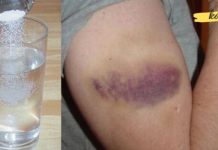Can Flat Feet Cause Serious Health Problems? You Won’t Believe This!

Flat feet, also known as pes planus, is a common foot deformity characterized by the flattening or lowering of the transverse and, less commonly, longitudinal arches of the foot. Flat feet can be either complete or partial. The lower the arch height, the flatter the foot appears. Flat feet can be congenital (present from birth) or acquired over time.
Causes of Flat Feet
The most common cause of congenital flat feet is hereditary predisposition. In these cases, a person is born with a weakness in the ligamentous apparatus of the foot. Acquired flat feet, on the other hand, may develop later due to several factors, including:
Rickets: This disease weakens the musculoskeletal system and softens the bones of the foot, causing the arch to collapse.
Nervous system damage: Conditions such as soft or spastic paralysis of the lower limbs can disrupt the normal positioning of foot bones.
Poliomyelitis: This viral disease causes muscle paralysis, including muscles that support the foot’s structure, leading to flat feet.
Foot injuries: Fractures, torn ligaments, and other trauma can alter the foot’s anatomy and cause flattening.
Overuse or overload of the foot: Excessive body weight, heavy physical work, prolonged standing, or wearing inappropriate footwear can strain the foot arches, leading to flat feet.
Flat Feet as an Independent Condition or Associated Disorder
Sometimes flat feet is an isolated condition, but it can also accompany other disorders such as:
Congenital hip dislocation
Valgus deformity of the thigh bone
Postural abnormalities like spinal curvature (especially kyphosis-lordosis)
Tibial torsion (inward twisting of the shin bone)
Neuro-orthopedic diseases
Symptoms of Flat Feet
The main symptoms patients often report include:
Easy fatigue during walking or standing
A sensation of heaviness or discomfort in the feet
Pain in the legs, which tends to worsen by the end of the day and can progressively increase over time
Occasional lower back pain
Noticeable flattening or collapse of the foot arches (the foot may appear elongated, with both the transverse and longitudinal arches flattened)
The front of the foot may turn inward, and the heel may lean outward
What Serious Health Problems Can Flat Feet Cause?
Flat feet is not just a cosmetic or minor inconvenience — it is a serious and often insidious condition that can lead to a cascade of other health issues. When the arches of the foot flatten, the lower back and joints of the lower limbs (ankle, knee, hip, and pelvis) are forced to compensate for abnormal shock and stresses during walking. This compensatory mechanism is unnatural for these joints and leads to accelerated wear and damage, causing:
Osteoarthritis (arthrosis): Degeneration of joints such as the knees, hips, and ankle joints.
Varicose veins: Poor circulation in the lower limbs due to improper load distribution.
Asymmetrical development of the lower limbs: Uneven bone growth or muscle strength between the legs.
Meniscus inflammation: Due to abnormal stress on the knee joint.
Knee joint instability: Leading to further joint damage and pain.
Coxarthrosis: Arthritis of the hip joint.
Osteochondrosis: Degenerative changes in the spine.
Spinal curvature: Such as scoliosis or kyphosis, resulting from altered posture.
Intervertebral disc herniation: Compression of spinal nerves causing pain and neurological symptoms.
Radiculitis: Nerve root inflammation resulting in pain and numbness.
Additionally, flat feet can cause foot-specific problems such as:
Hallux valgus (bunions)
Toe deformities
Corns and calluses
Ingrown toenails
All these conditions cause significant discomfort, reduce mobility, and can impair quality of life.
Diagnosis of Flat Feet
Diagnosis begins with a thorough physical examination of the feet in both standing and sitting positions, viewed from the front, side, and back. Modern diagnostics include:
Plantography: A footprint analysis to assess arch height and pressure distribution.
Computed tomography (CT) scans or other imaging methods for detailed bone assessment.
X-rays to visualize bone structure and alignment.
Early diagnosis, especially in children before or during school age, is crucial. Treatment at an early stage is far more effective. Parents should monitor their children’s foot development and consult an orthopedic specialist at the first sign of abnormalities.
Treatment of Flat Feet
Treatment is complex and multi-faceted, often combining several approaches:
Medications: To reduce inflammation and relieve pain if present.
Physiotherapy and physical therapy: Including exercises designed to strengthen foot muscles and ligaments and to raise the arch.
Balneotherapy: Therapeutic baths for muscle relaxation.
Therapeutic exercises: Regularly performed exercises help to improve foot arch height, strengthen the musculoskeletal system, and correct posture.
Use of orthopedic footwear with insoles (supinators): These provide artificial support to the arch, improving foot biomechanics.
Swimming: A low-impact exercise that strengthens muscles without stressing the feet.
Foot massages: Particularly focusing on the foot arch to stimulate muscle and ligament function.
Casting: In severe cases, a plaster cast may be applied to support the foot.
Surgery: Reserved for cases where conservative treatments fail, surgery aims to correct deformities and restore foot function.
Prevention of Flat Feet
Preventive measures can help maintain healthy foot arches and avoid complications:
Avoid wearing narrow or tight shoes.
Minimize prolonged standing; rest your legs regularly.
Perform daily foot exercises to strengthen muscles.
Use foot baths that improve muscle tone and ligament strength.
Regularly massage your feet.
Wear orthopedic insoles or shoes with proper arch support, even if you don’t currently have flat feet.
Final Thoughts
Flat feet might seem like a minor issue, but as this detailed overview shows, it can lead to numerous serious health problems if left untreated. The feet are the foundation of our body, and their health directly affects the entire musculoskeletal system. Ignoring flat feet can cause a domino effect of pain, joint degeneration, and impaired mobility throughout life.
If you or your child shows signs of flat feet, don’t hesitate to consult an orthopedic specialist early. With timely and comprehensive care, you can prevent serious complications and maintain an active, healthy lifestyle.












